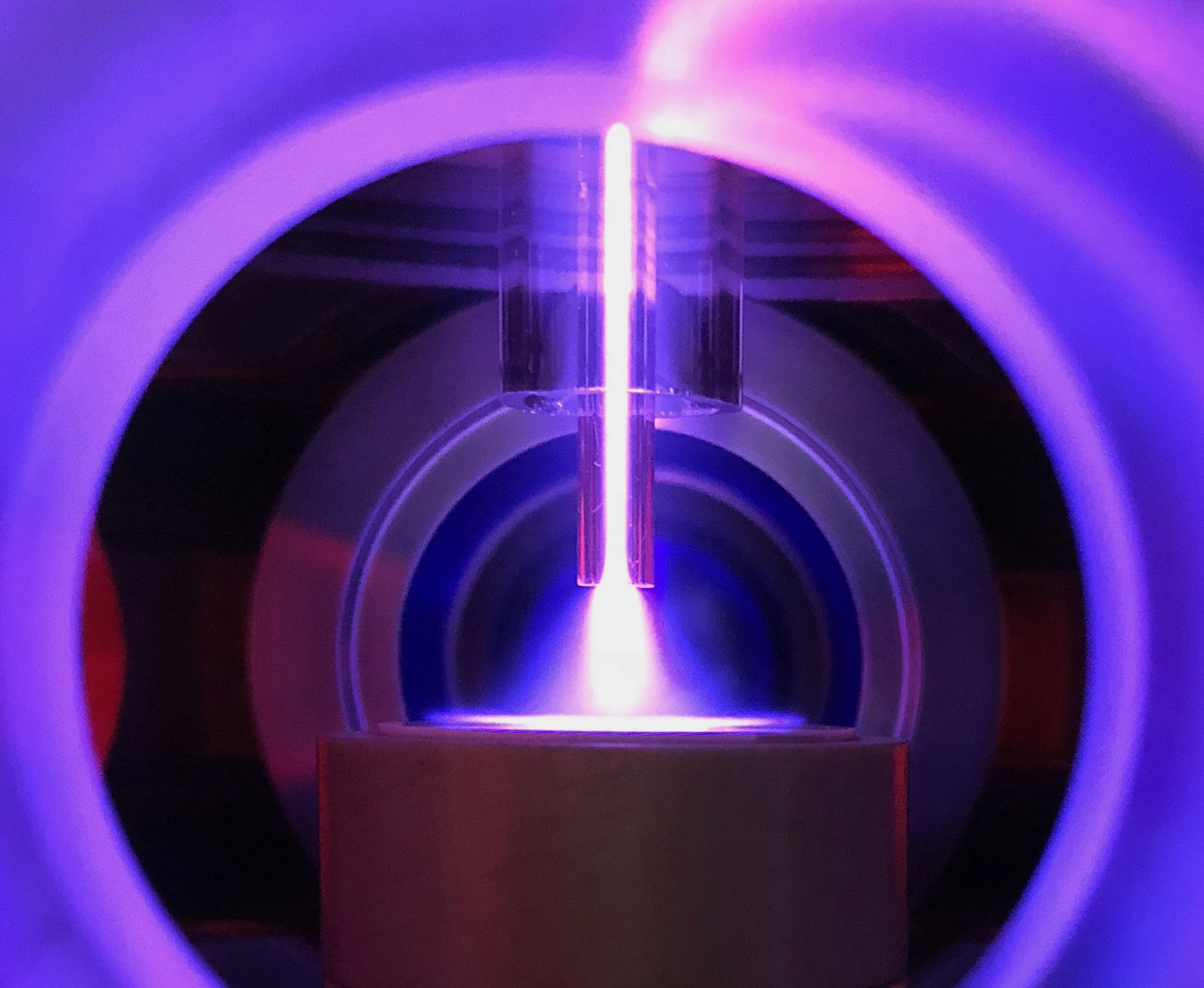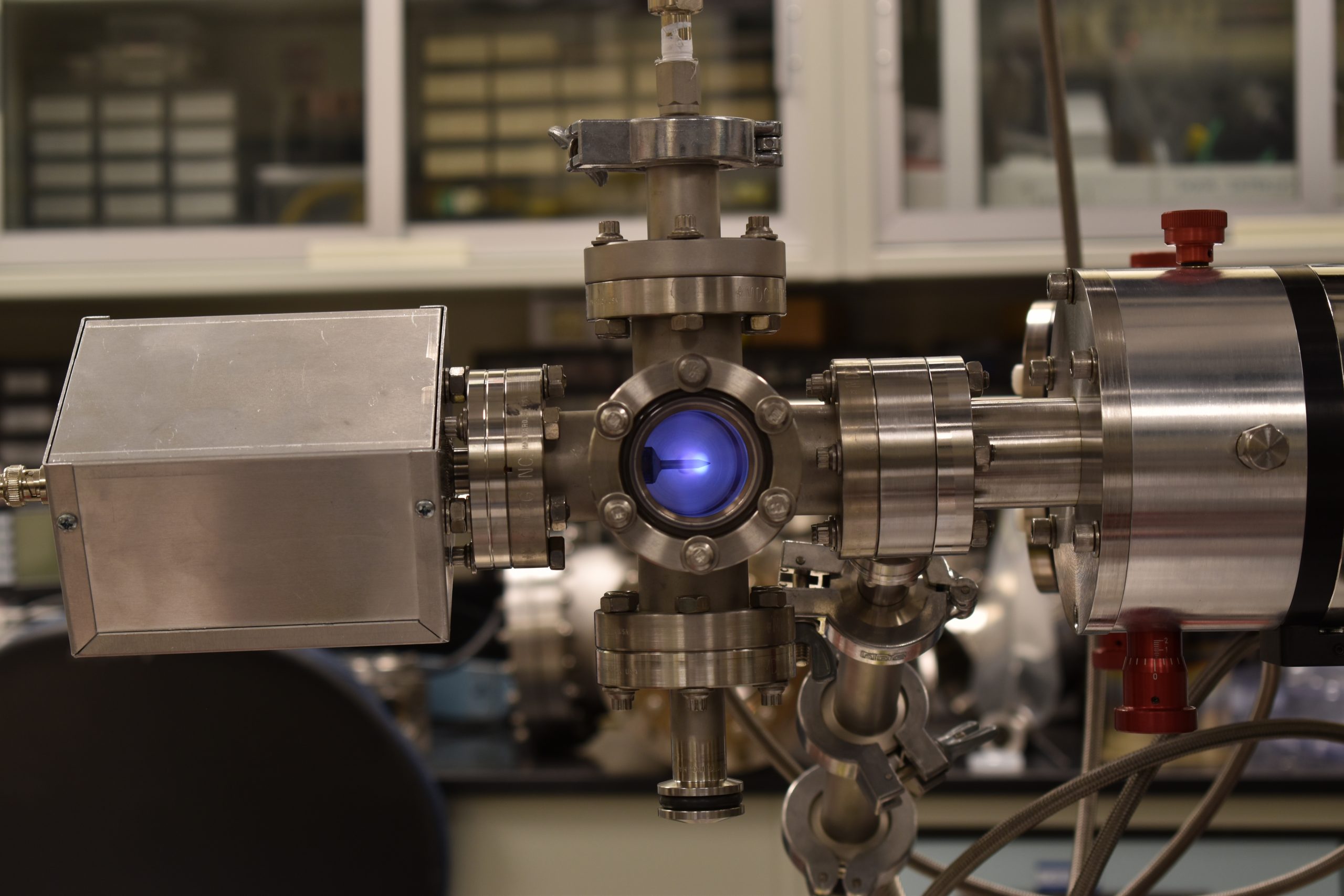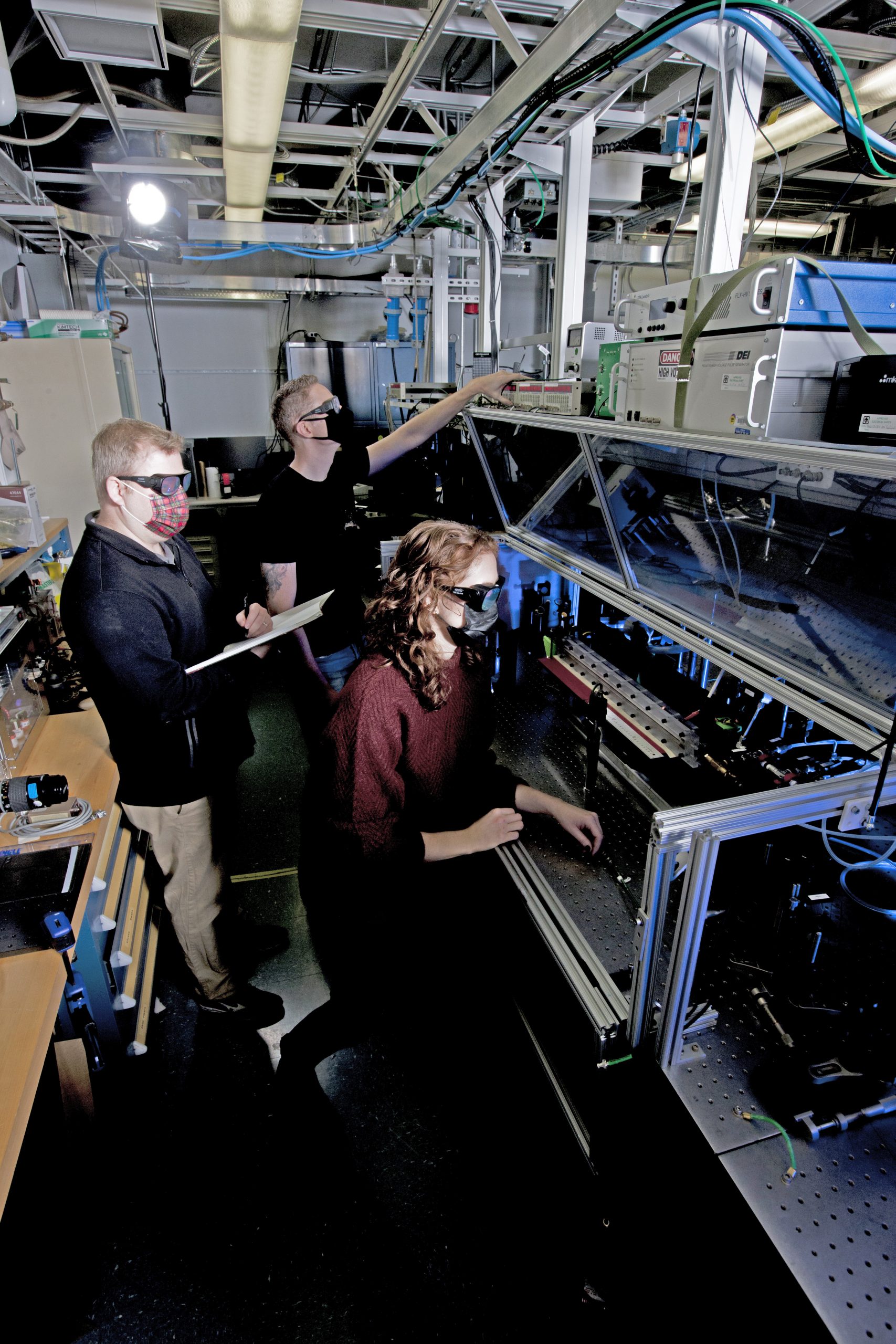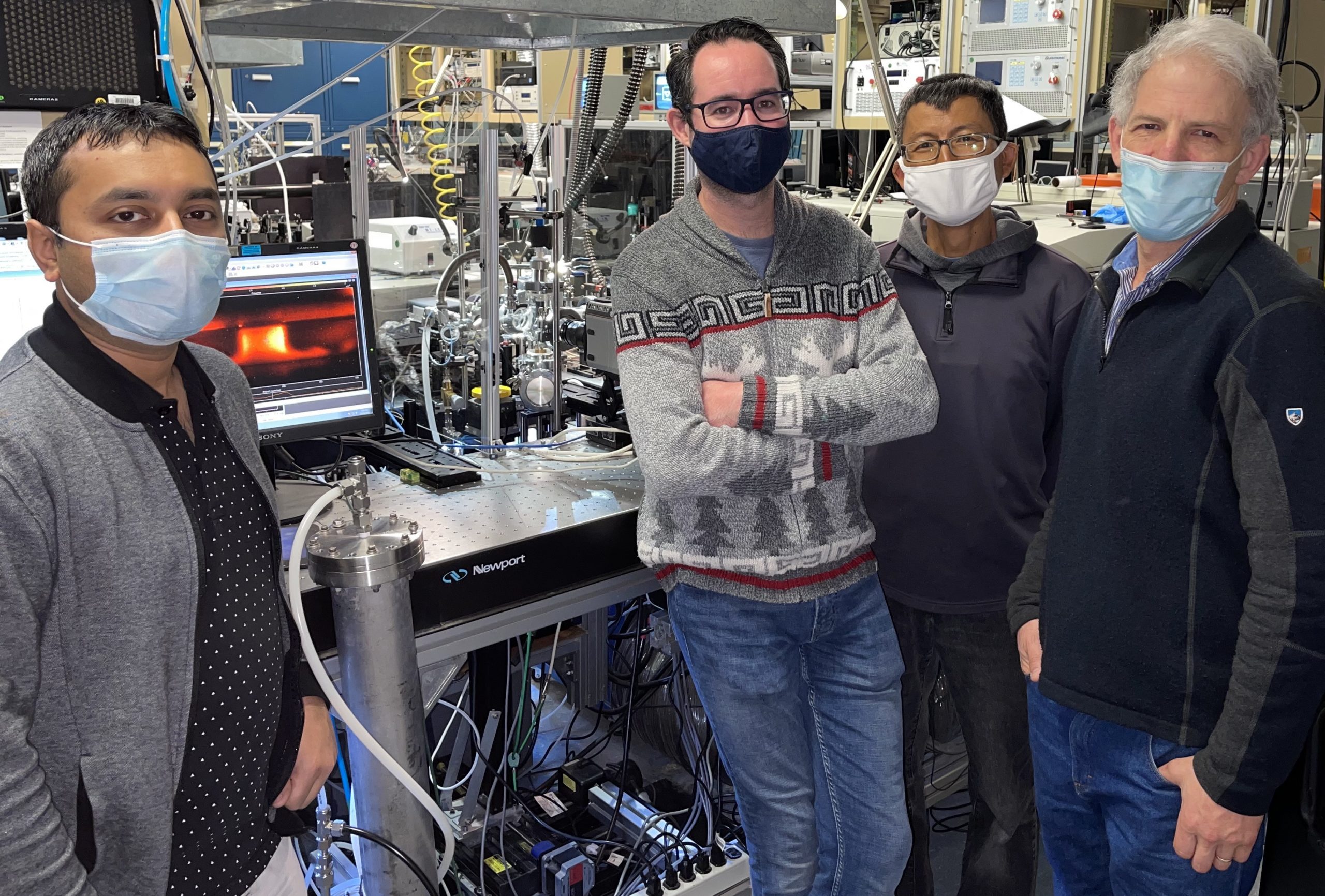




Introduction
Mission Statement
To continually serve the low-temperature plasma community by providing it access to world class capabilities and expertise to enable them to further their goals and to advance plasma science.
About
The Sandia Low-Temperature Plasma Research Facility (PRF) offers collaborators access to cutting edge diagnostic and computational capabilities and the expertise that is needed to set up and execute experiments and analyze data generated during the collaborative endeavor. The research capabilities and expertise are applicable for studies of a large variety of low temperature plasmas in a broad range of conditions such as: transient to steady-state, low pressure collisionless to high pressure collisional, non-equilibrium to thermal, with and without applied RF, pulsed, or DC electric and magnetic fields. These capabilities include:
- Optical interrogation of species with CW, nanosecond, picosecond, and femtosecond laser systems for laser-induced fluorescence, two-photon laser induced fluorescence, laser-collision induced fluorescence, 1D Raman imaging, 2D CARS, tomographic PIV, Thomson scattering, electric field-induced second harmonic generation, multiphoton ionization, and microwave scattering
- In-situ diagnostics of nanoparticles in plasma and gas phase (imaging and size –distribution, chemical composition, charge measurements, velocities)
- High-speed and multi-dimensional imaging of dynamic and stochastic environments with high-speed cameras (up to 1 MFPS frame rate), gated intensified cameras (< 200 ps gate) and framing cameras (1 BFPS)
- Spectroscopic tools covering vacuum ultraviolet (VUV) through visible to Far IR (FTIR) as well as high-resolution mass spectroscopy.
- Large infrastructure of equipment to build or incorporate a broad range of plasma sources and operating conditions
- Measurements of plasma-induced surface charging and secondary electron emission properties of plasma facing materials
- Massively parallel ES and EM PIC-DSMC, and in-development hybrid and fluid simulation capabilities, for collisionless to high pressure multi-species plasma systems with non-equilibrium chemistry and photonic processes
- Analytical theory support for plasma experiments, simulations, and optical calculations
- Support for quantum chemistry calculations relevant to plasma-material interactions and synthesis of nanoparticles
Collaborations will be selected through an annual proposal submission and review process. Selection will consider scientific and technical merit, appropriateness of the proposed methods or approach as well as feasibility and availability of facility resources.
Researchers are strongly encouraged to discuss their ideas with facility scientists prior to proposal submission.
A call for proposals will occur in October (immediately following the GEC), and the proposal deadline is in December. Submissions will utilize a common template that can be submitted to either or both host institutions.
